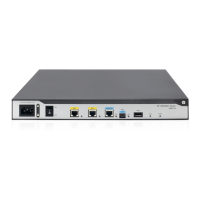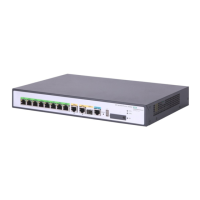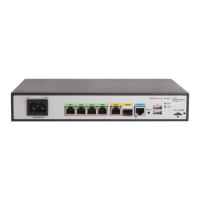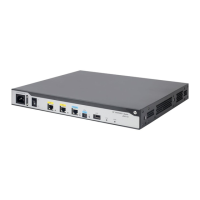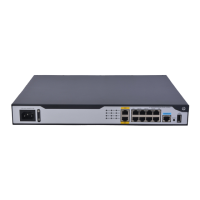12
Ste
Command
Remarks
4. (Optional.) Configure a PPP
address pool route.
ppp ip-pool route ip-address
{ mask-length | mask }
[ vpn-instance vpn-instance-name ]
[ vsrp-instance
vsrp-instance-name ]
By default, no PPP address pool
route exists.
The destination network of the
PPP address pool route must
include the PPP address pool.
5. Enter interface view.
interface interface-type
interface-number
N/A
6. Configure the interface to assign
an IP address from the
configured PPP address pool to
the peer.
remote address pool pool-name
By default, an interface does not
assign an IP address to the peer.
7. Configure an IP address for the
interface.
ip address ip-address
By default, no IP address is
configured on an interface.
This command is optional when
the PPP address pool has been
configured with a gateway
address.
To configure the device as the server (Method 2: Specify a DHCP address pool):
Ste
Command
Remarks
1. Enter system view.
system-view N/A
2. Configure DHCP.
• If the server acts as a DHCP
server, configure the DHCP
server and a DHCP address
pool on the server.
• If the server acts as a DHCP
relay agent, configure the
DHCP relay agent on the
server, and configure a DHCP
address pool on the remote
DHCP server. In addition, you
must enable the DHCP relay
agent to record relay entries,
and configure a DHCP relay
address pool.
For information about
configuring DHCP, see Layer 3
IP Services Configuration Guide.
3. Enter interface view.
interface interface-type
interface-number
N/A
4. Configure the interface to assign
an IP address from the
configured DHCP address pool
to the peer.
remote address pool pool-name
By default, an interface does not
assign an IP address to the peer.
5. Configure an IP address for the
interface.
ip address ip-address
By default, no IP address is
configured on an interface.
To configure the device as the server (Method 3: Associate a PPP address pool with an ISP domain):
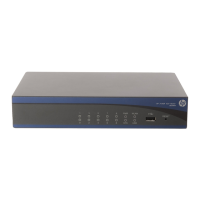
